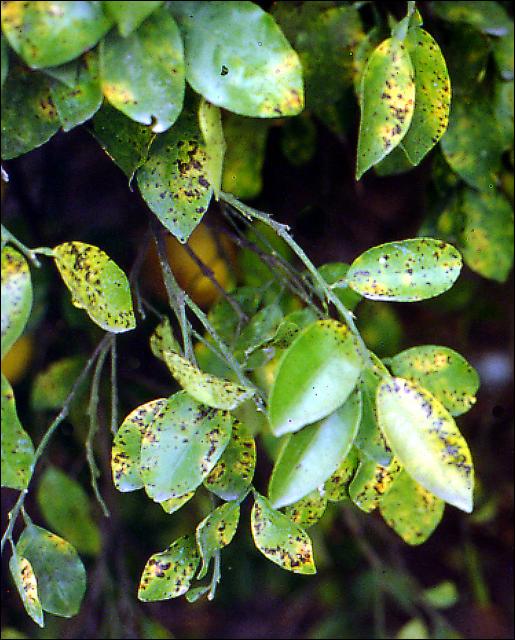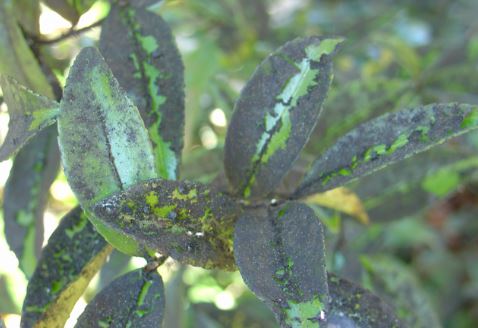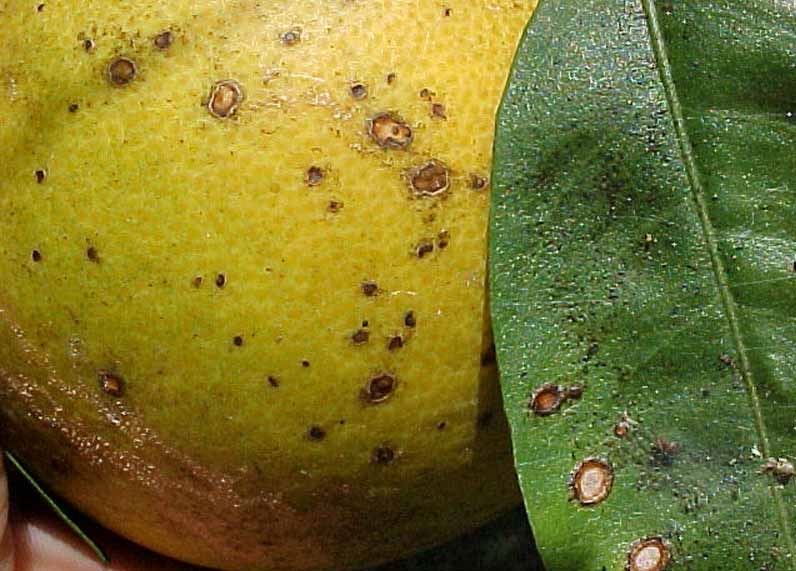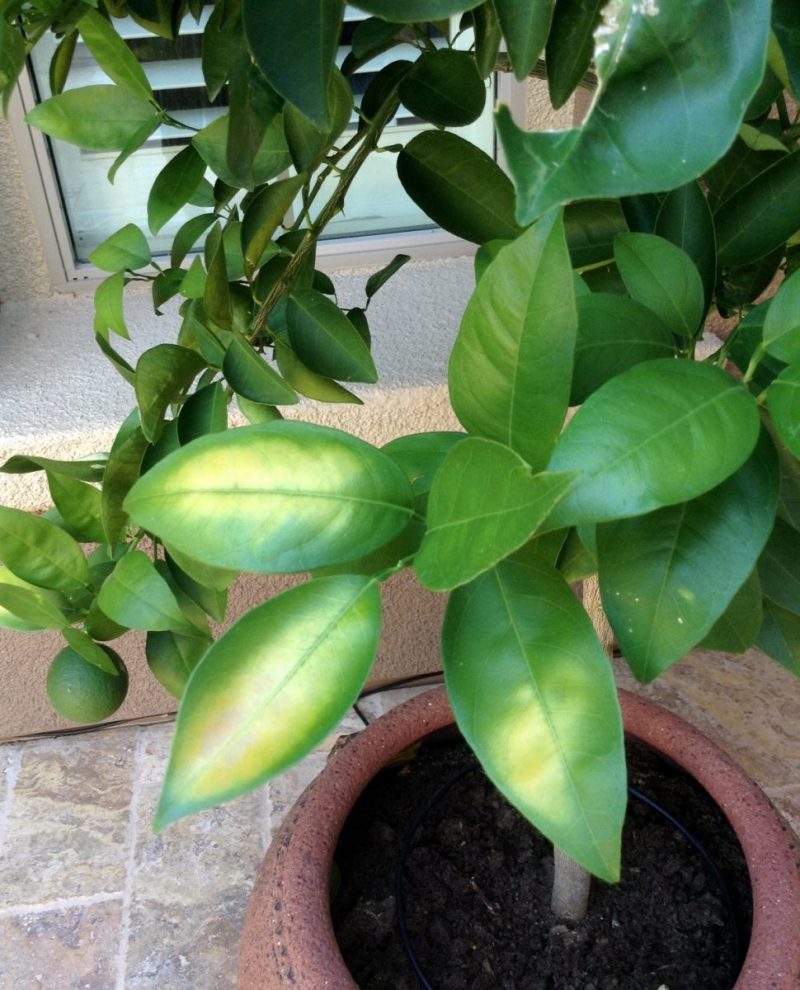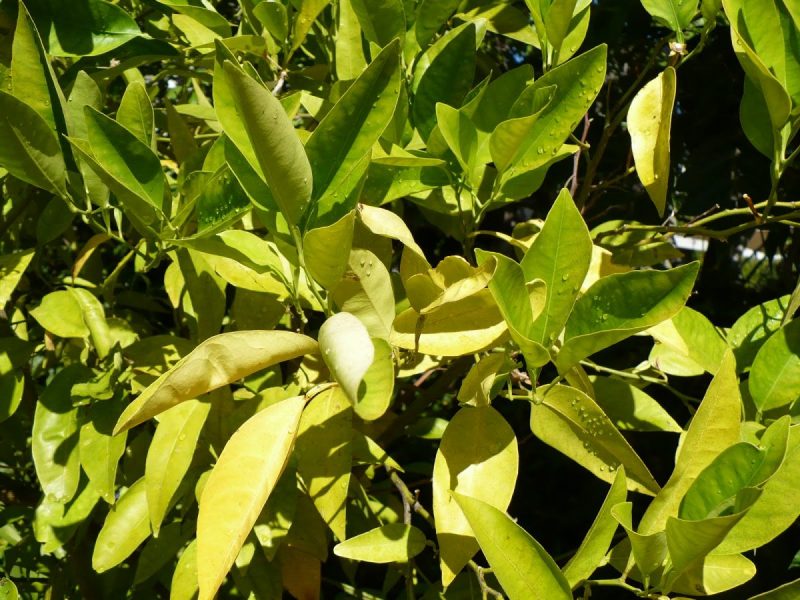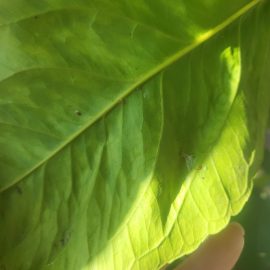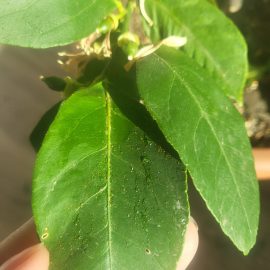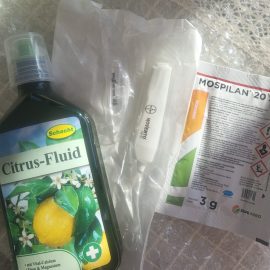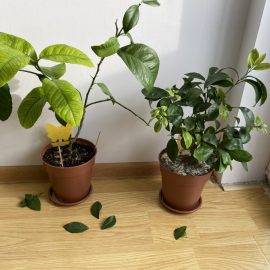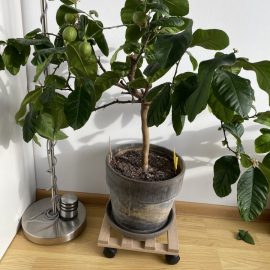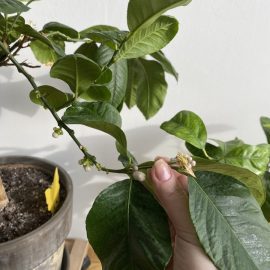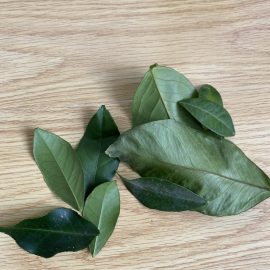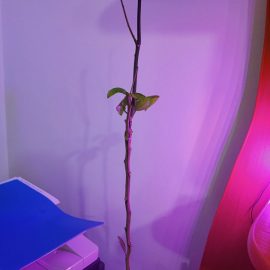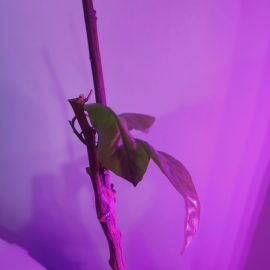Citrus, pest and disease control
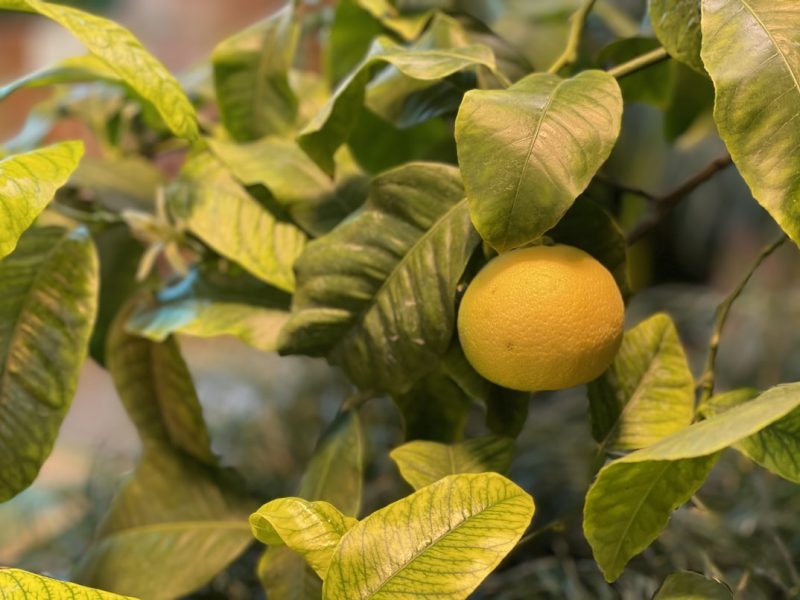
The genus Citrus includes several species of plants such as lemon, orange, grapefruit, pomelo, mandarin, which are commonly called citrus plants. They are part of the Rutaceae family and originate from Asia and Europe.
The environmental conditions in countries with a temperate continental transitioning into an oceanic climate are not favorable for the cultivation of citrus plants in the garden, but they can be used as indoor plants, grown in pots.
The main diseases of citrus plants are:
Greasy spot, caused by the fungus Mycosphaerella citri. The disease manifests through the appearance of yellow spots on the top side of the leaves, while on the underside, prominent, orange-brown spots appear. The spots later become dark in color and seem to be damp.
To fight the disease, it is recommended to apply fungicide treatments such as:
Recommended products
-
You can find products on a different store
Change Store -
You can find products on a different store
Change Store -
You can find products on a different store
Change Store -
You can find products on a different store
Change Store -
You can find products on a different store
Change Store -
You can find products on a different store
Change Store -
You can find products on a different store
Change Store -
You can find products on a different store
Change Store -
You can find products on a different store
Change Store -
You can find products on a different store
Change Store -
You can find products on a different store
Change Store -
You can find products on a different store
Change Store -
You can find products on a different store
Change Store -
You can find products on a different store
Change Store -
You can find products on a different store
Change Store -
You can find products on a different store
Change Store -
You can find products on a different store
Change Store -
You can find products on a different store
Change Store -
You can find products on a different store
Change Store -
You can find products on a different store
Change Store -
You can find products on a different store
Change Store -
You can find products on a different store
Change Store -
You can find products on a different store
Change Store -
You can find products on a different store
Change Store
Sooty mold is caused by fungi of the genus Capnodium. This fungus grows on sweet droppings (“honeydew”) produced by aphids, or greenhouse whiteflies. Because of this fungus, the leaves’ processes of photosynthesis, evaporation, and respiration are inhibited and, as a result, the plant grows with difficulty or even stagnates. To combat this fungus, the pests have to be controlled. The sooty mold can then be removed from the leaves with a soft, damp cloth.
Anthracnose, caused by the fungus Colletotrichum gloeosporioides. Light-colored spots appear on the leaves, which are surrounded by a purple ring. Also, dark spots appear on the fruit. This fungus generally develops on areas attacked by insects, sunburn, or by mechanical damage.
At the first signs of infection, it is recommended to perform treatments with specific fungicides :
Recommended products
-
You can find products on a different store
Change Store -
You can find products on a different store
Change Store -
You can find products on a different store
Change Store -
You can find products on a different store
Change Store -
You can find products on a different store
Change Store -
You can find products on a different store
Change Store -
You can find products on a different store
Change Store -
You can find products on a different store
Change Store -
You can find products on a different store
Change Store -
You can find products on a different store
Change Store -
You can find products on a different store
Change Store -
You can find products on a different store
Change Store -
You can find products on a different store
Change Store -
You can find products on a different store
Change Store -
You can find products on a different store
Change Store -
You can find products on a different store
Change Store -
You can find products on a different store
Change Store -
You can find products on a different store
Change Store -
You can find products on a different store
Change Store -
You can find products on a different store
Change Store -
You can find products on a different store
Change Store -
You can find products on a different store
Change Store -
You can find products on a different store
Change Store -
You can find products on a different store
Change Store
Most frequently, citrus plants are attacked by whiteflies, aphids, mites, European fruit lecanium, or wooly apple aphids.
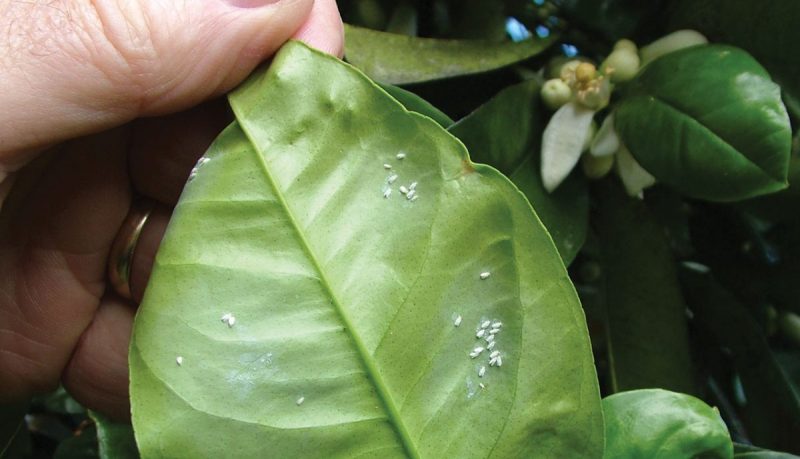
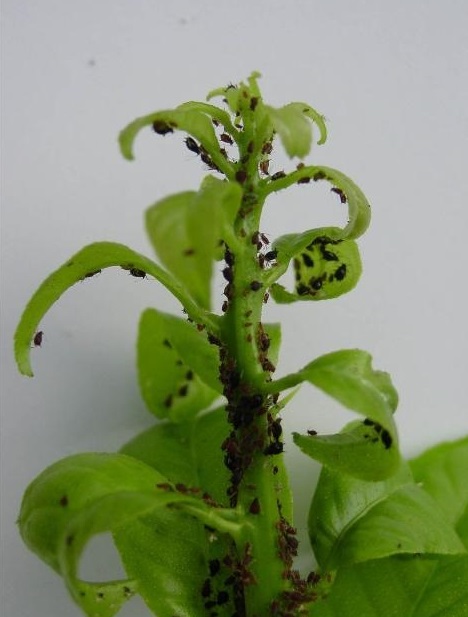
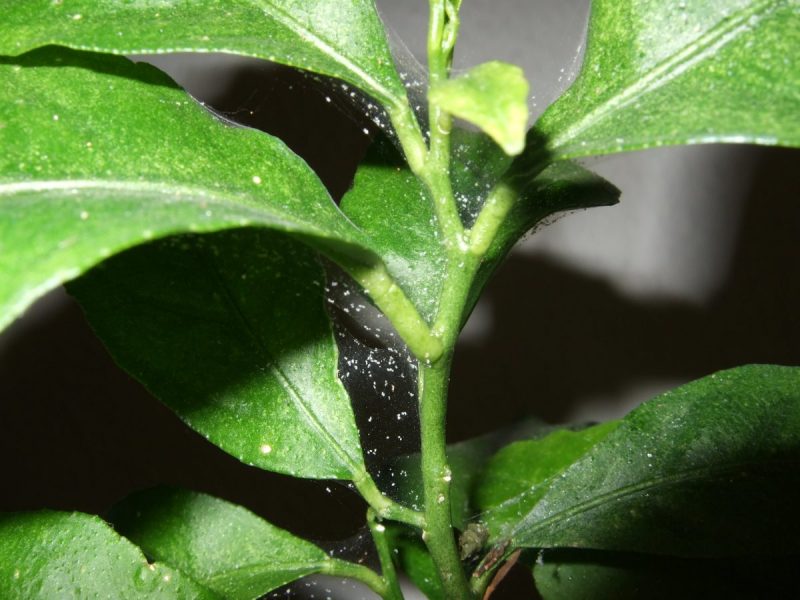
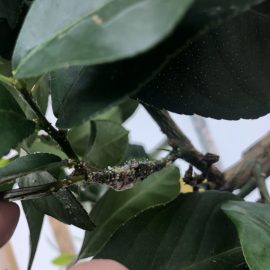
The main pests which infest citrus plants are:
Greenhouse whitefly. It frequently infests indoor plants and it causes their stagnation and weakening. The presence of greenhouse whiteflies is accompanied by “honeydew”.
Controlling this pest is not easy because it reproduces a lot in a short time. It is recommended to alternate insecticides in order to avoid the development of resistance to the active substances.
Recommended products
-
You can find products on a different store
Change Store -
You can find products on a different store
Change Store -
You can find products on a different store
Change Store -
You can find products on a different store
Change Store -
You can find products on a different store
Change Store -
You can find products on a different store
Change Store -
You can find products on a different store
Change Store -
You can find products on a different store
Change Store -
You can find products on a different store
Change Store -
You can find products on a different store
Change Store -
You can find products on a different store
Change Store -
You can find products on a different store
Change Store -
You can find products on a different store
Change Store -
You can find products on a different store
Change Store -
You can find products on a different store
Change Store -
You can find products on a different store
Change Store -
You can find products on a different store
Change Store -
You can find products on a different store
Change Store -
You can find products on a different store
Change Store -
You can find products on a different store
Change Store -
You can find products on a different store
Change Store -
You can find products on a different store
Change Store -
You can find products on a different store
Change Store -
You can find products on a different store
Change Store
Aphids. They are usually found on the growing tips, causing the leaves to twist. An adherent secretion also appears on the leaves. Treatments can be applied using insecticides such as:
Recommended products
-
You can find products on a different store
Change Store -
You can find products on a different store
Change Store -
You can find products on a different store
Change Store -
You can find products on a different store
Change Store -
You can find products on a different store
Change Store -
You can find products on a different store
Change Store -
You can find products on a different store
Change Store -
You can find products on a different store
Change Store -
You can find products on a different store
Change Store -
You can find products on a different store
Change Store -
You can find products on a different store
Change Store -
You can find products on a different store
Change Store -
You can find products on a different store
Change Store -
You can find products on a different store
Change Store -
You can find products on a different store
Change Store -
You can find products on a different store
Change Store -
You can find products on a different store
Change Store -
You can find products on a different store
Change Store -
You can find products on a different store
Change Store -
You can find products on a different store
Change Store -
You can find products on a different store
Change Store -
You can find products on a different store
Change Store -
You can find products on a different store
Change Store -
You can find products on a different store
Change Store
European fruit lecanium or wooly apple aphids. These pests can be found on both the stem and the leaves and they feed on the sap of the plant. They have a protective shield and in order to control these pests, it is recommended to apply systemic insecticides, to which you should add an adjuvant for better penetration of the solution through their shield.
Recommended products
-
You can find products on a different store
Change Store -
You can find products on a different store
Change Store -
You can find products on a different store
Change Store -
You can find products on a different store
Change Store -
You can find products on a different store
Change Store -
You can find products on a different store
Change Store -
You can find products on a different store
Change Store -
You can find products on a different store
Change Store -
You can find products on a different store
Change Store -
You can find products on a different store
Change Store -
You can find products on a different store
Change Store -
You can find products on a different store
Change Store -
You can find products on a different store
Change Store -
You can find products on a different store
Change Store -
You can find products on a different store
Change Store -
You can find products on a different store
Change Store -
You can find products on a different store
Change Store -
You can find products on a different store
Change Store -
You can find products on a different store
Change Store -
You can find products on a different store
Change Store -
You can find products on a different store
Change Store -
You can find products on a different store
Change Store -
You can find products on a different store
Change Store -
You can find products on a different store
Change Store
Mites. These small insects signal their presence through the thin web on the underside of the leaves and through the specific symptoms. In case of strong infestation, the web can be seen between the shoots or at the base of the leaves. The leaves turn yellow and eventually fall. Considering that this pest reproduces a lot in a short time, to combat it, it is necessary to apply 2-3 consecutive treatments, by alternating 2 acaricides such as:
Recommended products
-
You can find products on a different store
Change Store -
You can find products on a different store
Change Store -
You can find products on a different store
Change Store -
You can find products on a different store
Change Store -
You can find products on a different store
Change Store -
You can find products on a different store
Change Store -
You can find products on a different store
Change Store -
You can find products on a different store
Change Store -
You can find products on a different store
Change Store -
You can find products on a different store
Change Store -
You can find products on a different store
Change Store -
You can find products on a different store
Change Store -
You can find products on a different store
Change Store -
You can find products on a different store
Change Store -
You can find products on a different store
Change Store -
You can find products on a different store
Change Store -
You can find products on a different store
Change Store -
You can find products on a different store
Change Store -
You can find products on a different store
Change Store -
You can find products on a different store
Change Store -
You can find products on a different store
Change Store -
You can find products on a different store
Change Store -
You can find products on a different store
Change Store -
You can find products on a different store
Change Store
Recommended products
-
You can find products on a different store
Change Store -
You can find products on a different store
Change Store -
You can find products on a different store
Change Store -
You can find products on a different store
Change Store -
You can find products on a different store
Change Store -
You can find products on a different store
Change Store -
You can find products on a different store
Change Store -
You can find products on a different store
Change Store -
You can find products on a different store
Change Store -
You can find products on a different store
Change Store -
You can find products on a different store
Change Store -
You can find products on a different store
Change Store -
You can find products on a different store
Change Store -
You can find products on a different store
Change Store -
You can find products on a different store
Change Store -
You can find products on a different store
Change Store -
You can find products on a different store
Change Store -
You can find products on a different store
Change Store -
You can find products on a different store
Change Store -
You can find products on a different store
Change Store -
You can find products on a different store
Change Store -
You can find products on a different store
Change Store -
You can find products on a different store
Change Store -
You can find products on a different store
Change Store
Other problems that may occur
We often face problems caused by abiotic diseases, such as inappropriate environmental factors or inadequate nutrition. These symptoms are often confused with biotic diseases, but most of the time we are dealing with dysfunctions of the physiological processes in the plant.
Leaf fall. This problem can be caused by various factors such as:
- insufficient or excessive watering;
- sudden change in temperature or light intensity by moving the plant;
- inadequate nutrition;
- the presence of a disease or a pest, but in this situation, specific symptoms can also be observed.
In winter, citrus plants tend to lose some of their leaves due to low atmospheric humidity or to not suitably correlated environmental factors (temperature, light, and administered water). This reaction of the plant should be avoided, but the plant does not die and will regenerate in spring. It is an often mistake to excessively water or fertilize plants at the first signs of leaf fall, a procedure that can eventually lead to the death of the plant.
When this problem occurs, it is necessary to find the cause that led to the falling of the leaves.
Fruit fall. It can be caused by any element’s deficiency, by the sudden change of temperature or by big variations in the humidity of the substrate (too high or too low).
Sunburn. These usually occur when the plant is moved to a sunny place without being acclimatized. In this case, specific light-colored spots appear. The tissue that has burns on it will not regenerate and it is recommended to remove the leaves that have these symptoms.
Yellowed leaves. Proper nutrition plays an important role in the healthy growth and development of plants. When one of the elements is deficient, an imbalance occurs that causes various problems.
Iron deficiency is common in citrus plants and is manifested by the yellowing of the foliar limb between the strings, while the area in the immediate vicinity of the ribs remains green. Symptoms begin to appear from the top of the shoots. In case of severe deficiency, the basal leaves also turn yellow.
Nitrogen deficiency is manifested through total yellowing of the leaves, including discoloration of the ribs, and begins with the basal leaves.
Recommended products
-
You can find products on a different store
Change Store -
You can find products on a different store
Change Store -
You can find products on a different store
Change Store -
You can find products on a different store
Change Store -
You can find products on a different store
Change Store -
You can find products on a different store
Change Store -
You can find products on a different store
Change Store -
You can find products on a different store
Change Store -
You can find products on a different store
Change Store -
You can find products on a different store
Change Store -
You can find products on a different store
Change Store -
You can find products on a different store
Change Store -
You can find products on a different store
Change Store -
You can find products on a different store
Change Store -
You can find products on a different store
Change Store -
You can find products on a different store
Change Store -
You can find products on a different store
Change Store -
You can find products on a different store
Change Store -
You can find products on a different store
Change Store -
You can find products on a different store
Change Store -
You can find products on a different store
Change Store -
You can find products on a different store
Change Store -
You can find products on a different store
Change Store -
You can find products on a different store
Change Store
Glossy leaves. Citrus plants have natural glossy leaves if they are well cared for and properly fertilized. However, there are times when an adherent liquid can be seen on the leaves, called “honeydew”, which is associated with the presence of aphids, whiteflies, European fruit lecanium, and wooly apple aphids. To eliminate this inconvenience, the insects must be dealt with and the liquid on the leaves should be wiped with a damp cloth.














































































































































































































































































































































































































































